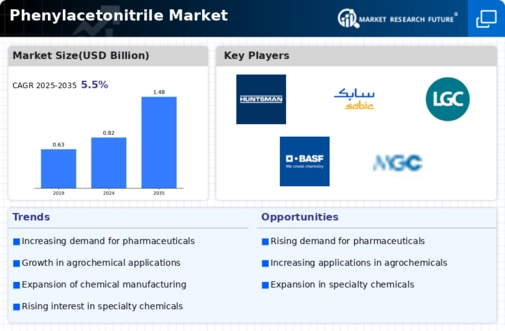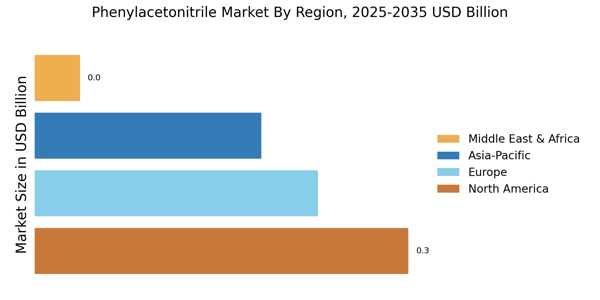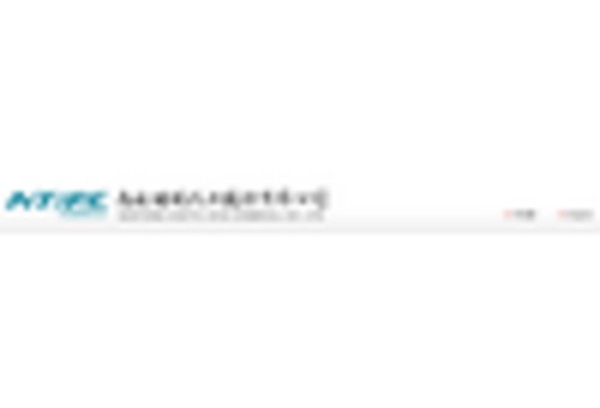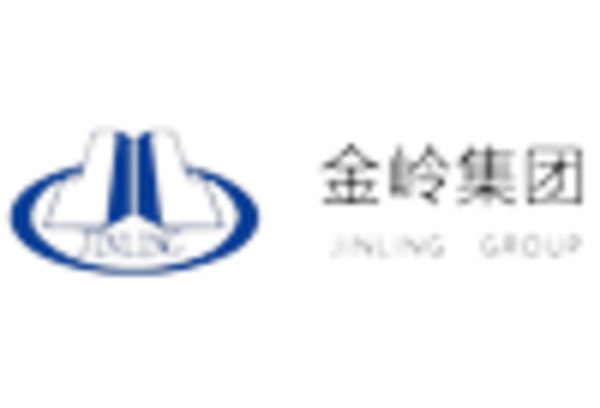Rising Demand in Agrochemicals
The Phenylacetonitrile Market is experiencing a notable increase in demand due to its application in agrochemicals. As agricultural practices evolve, the need for effective pest control and crop protection products intensifies. Phenylacetonitrile Market serves as a key intermediate in the synthesis of various agrochemical compounds, which are essential for enhancing agricultural productivity. The market for agrochemicals is projected to grow at a compound annual growth rate (CAGR) of approximately 5.5% over the next few years, indicating a robust demand for phenylacetonitrile. This growth is driven by the rising global population and the consequent need for increased food production, thereby positioning the Phenylacetonitrile Market favorably in the context of agricultural advancements.
Expansion in Chemical Synthesis
The Phenylacetonitrile Market is significantly influenced by the expansion of chemical synthesis processes across various sectors. As industries seek to innovate and develop new chemical products, phenylacetonitrile emerges as a vital building block in the synthesis of pharmaceuticals, dyes, and other specialty chemicals. The market for specialty chemicals is anticipated to reach USD 1 trillion by 2025, with phenylacetonitrile playing a crucial role in this growth. The versatility of phenylacetonitrile in chemical reactions enhances its attractiveness to manufacturers, thereby driving its demand. This trend suggests that the Phenylacetonitrile Market will continue to thrive as chemical synthesis becomes increasingly complex and diverse.
Growth in Pharmaceutical Applications
The Phenylacetonitrile Market is witnessing substantial growth due to its critical role in pharmaceutical applications. Phenylacetonitrile Market is utilized as an intermediate in the production of various active pharmaceutical ingredients (APIs), which are essential for drug formulation. The pharmaceutical sector is projected to grow at a CAGR of around 7% over the next few years, driven by the increasing prevalence of chronic diseases and the demand for innovative therapies. This growth in the pharmaceutical industry directly correlates with the rising demand for phenylacetonitrile, as manufacturers seek reliable sources for high-quality intermediates. Consequently, the Phenylacetonitrile Market is poised for expansion as pharmaceutical companies ramp up production to meet global health needs.
Regulatory Support for Chemical Safety
The Phenylacetonitrile Market is positively impacted by regulatory frameworks that promote chemical safety and environmental protection. Governments are increasingly implementing stringent regulations to ensure the safe use and handling of chemicals, including phenylacetonitrile. This regulatory support encourages manufacturers to adopt safer practices and invest in research and development for safer alternatives. As a result, the Phenylacetonitrile Market is likely to benefit from enhanced consumer confidence and market acceptance. Moreover, compliance with these regulations may lead to the development of innovative products that meet safety standards, further driving the demand for phenylacetonitrile in various applications.
Technological Innovations in Production
The Phenylacetonitrile Market is benefiting from technological innovations that enhance production efficiency and reduce costs. Advances in synthetic methodologies and process optimization are enabling manufacturers to produce phenylacetonitrile more sustainably and economically. These innovations not only improve yield but also minimize waste, aligning with the growing emphasis on sustainable practices in chemical manufacturing. As production techniques evolve, the Phenylacetonitrile Market is likely to see increased competitiveness and profitability. Furthermore, the integration of automation and digital technologies in production processes may lead to further enhancements in operational efficiency, thereby supporting the overall growth of the market.


















Leave a Comment